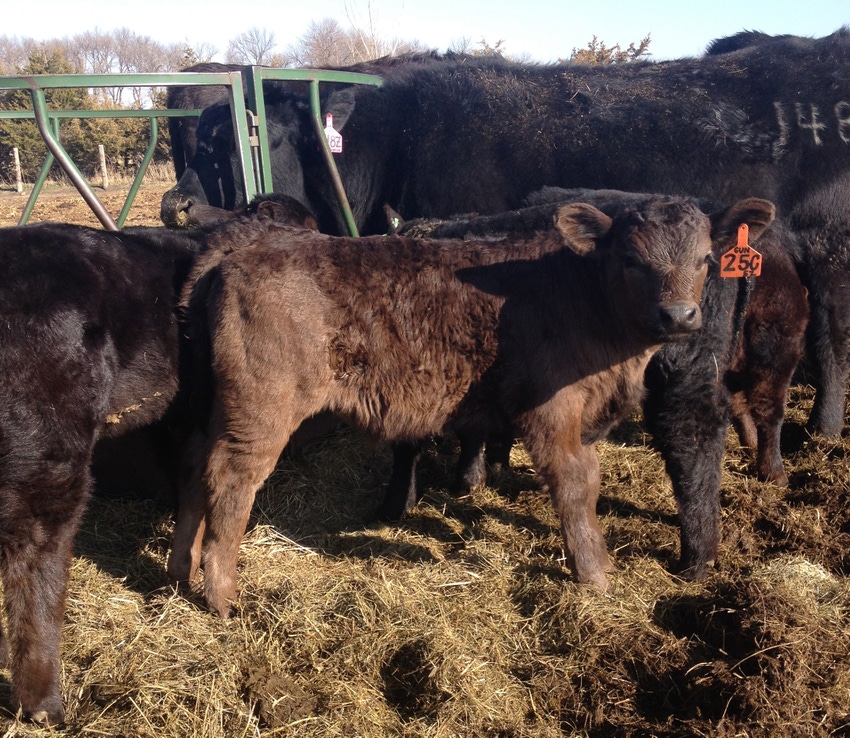Mud is often a by-product of the spring thaw. Here are five tips for managing the mud and maintaining herd health during the sometimes sloppy spring months.
February 27, 2017

March is just a day away, and while it’s unclear whether the new month will come in more like a lion or a lamb, one thing is for certain: once the spring thaw begins, producers will have to contend with the mud that typically follows.
Jane Parish, Mississippi State University Extension beef cattle specialist, offers five considerations for managing mud this spring.
1. Be mindful of newborn calves born in the mud
Parish writes, “Mud can negate the insulation value of the hair coat. Of distinct concern are newborn calves born in or near mud holes or muddy areas. Calves can become chilled by mud, trapped in it, or sickened by pathogens thriving in it. This is why it is so important to closely monitor calving, routinely check cattle, and move cow-calf pairs to fresh pasture soon after calving.”
2. Beware of fescue toxicosis
While this isn’t a concern in every region of the United States, in places like Mississippi where tall fescue is an important forage crop, cattle can become susceptible to fescue toxicosis and the heat-tolerance problems it creates.
Parish explains, “Cattle suffering from fescue toxicosis typically spend extended time in mud holes, making them more susceptible to health and performance complications related to mud. Even in drought-like conditions, mud may accumulate in shaded areas where cattle affected with fescue toxicosis loaf excessively. Concentration of urine and hoof action will cause deep mud holes to develop in toxic tall fescue pastures. Cattle experiencing tall fescue toxicosis often have large amounts of mud caked on their rough hair coats.”
3. Understand how mud impacts breeding success
If you’re at the tail of calving, you may already be thinking about breeding season. If your cow-calf pairs are in muddy lots or wet areas when you turn out a bull, you may have delayed breeding because of the difficulties that accompany mud.
Parish says, “Mud creates suction on hooves and makes it more difficult for cattle to move around in a muddy area. They expend more energy moving through mud and may have difficulty mounting for breeding. One only has to walk into a feeding area with deep mud once to realize just how difficult it is to take steps. Boots must be held securely on feet or the mud will claim them quickly.
“With mild mud conditions, just 4 to 8 inches of mud, cattle dry matter intake is reduced by 15% versus what it would be under the same conditions without any mud. When severe mud conditions are present, 1 foot or more of mud, dry matter intake plummets by 30% relative to the same conditions without any mud. It is no wonder that it becomes challenging to maintain good body condition on cows and desirable weight gains on calves when mud is all around.”
4. Know your soil types
Parish adds, “Although it may not be practical to totally eliminate mud on the farm, pastures, feeding areas, and cattle should be managed to minimize the negative impacts of mud on the herd. Start by taking an inventory of the soil types and slopes on the farm. Some soils drain better than others and are less prone to mud accumulation. If soil types and slopes are identified on a farm that are less susceptible to water pooling and/or mud build-up, then areas with these soils may be good places to select for high-traffic uses.”
5. Better manage high-traffic areas to reduce mud
Parish recommends, “Next, identify high-traffic areas on the farm. These are places that cattle or vehicles move across on a frequent basis. High-traffic areas may include lanes where cattle are funneled to move them through to another location. Gates and feeding and watering areas are other prime examples of high-traffic areas. Cattle handling areas are another high-traffic location on the farm.
“Ground-level protection from mud development in these areas may include construction of high-traffic ground coverings, such as feeding pads made of concrete, geotextile fabric, or other materials. Make sure that construction of ground coverings covers sufficient surface area to be effective. A feeding pad that is too small may become surrounded by deep mud.”
To read Parish’s additional tips for reducing mud, including information on deep-bedding, hay feeding, best waterers and more, click here.
The opinions of Amanda Radke are not necessarily those of beefmagazine.com or Penton Agriculture.
About the Author(s)
You May Also Like





